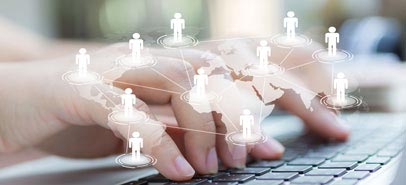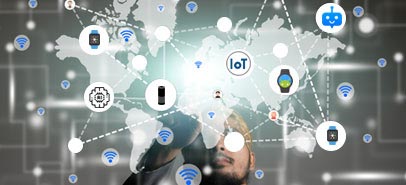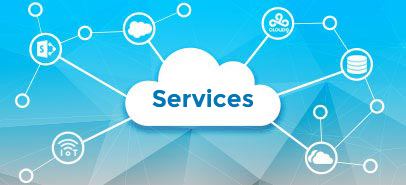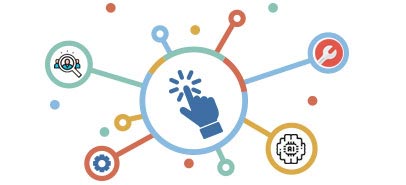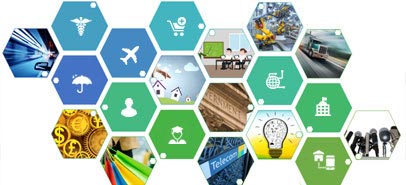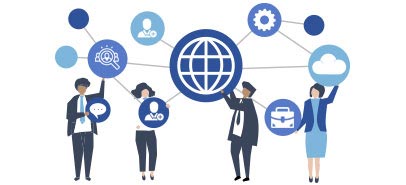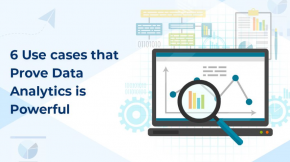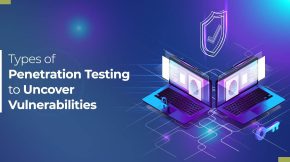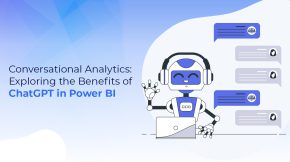All You Need to Know About Automated Data Capture
What if every detail from your invoices and contracts just flowed into your systems, perfectly organized? That’s what automated data capture promises, and it’s easier to get than you might think. Let’s see how it can change how you work.
What is Data Capture?
Basically, data capture is about taking information – whether it’s organized or all over the place in documents – and turning it into data your computer can use. You’re pulling information from paper or digital documents and making it a structured format that’s ready to be stored, edited, and processed.
There are two main ways to do it:
- Manual data capture
- Automated data capture
Let’s look at what makes them different.
Manual Data Capture Explained Simply
Manual data entry is the old way of gathering information and typing it into a computer. It might seem easy, especially if you’re a smaller business, but it has good and bad sides.
The Good Stuff:
- Easy to set up: Starting with manual data collection is easy, and keeps your first costs low.
- Creates jobs: It gives people work, because even folks with basic skills can do it.
- Needs a human touch: Some documents, like old handwritten letters, need someone to read them.
- Keeps data safe: For really private information, some companies like having a person watch over it.
The Not-So-Good Stuff:
- Easy to make mistakes: Manual data entry is prone to errors, especially if you have a lot of information.
- Takes a lot of time: It takes up a lot of time, which hurts how much you can get done.
- Hard to find data: Finding what you need in piles of documents can be hard.
- Hard to get insights: Getting useful insights from data you typed in by hand can be tricky.
Automated Data Capture Explained
Automated data capture uses tools and software, like Optical Character Recognition (OCR), to turn data into computer files. These tools use AI and machine learning to quickly read files and turn them into digital formats.
What’s Great About It:
- Fast and accurate: Computer software can grab and store data much faster and with fewer errors than people.
- Saves in the cloud: Cloud-based options let you save information online, so you don’t lose it and can get to it easily.
- Works with other tools: You can connect data capture tools with things like Databricks to handle and analyze data better.
What’s Not So Great:
- Data security: Online data can be hacked, so you need good security.
What is OCR Data Capture?
OCR data capture is a technology that scans documents, images, and PDFs, and turns the data into text you can edit and search. It figures out what the letters are and compares them to a list of fonts to get the data. Then, you can analyze, store, and use it with other tools. Industries like retail, lending, banking, government, real estate, healthcare, insurance, and logistics use OCR to automate pulling data.
Why Automated OCR Data Capture is Good
Automated OCR helps in many ways, like making things more efficient, accurate, and compliant.
1. Faster Turnaround
OCR systems make data available faster, even when there are a lot of documents. For example, an insurance company can pull customer data from hundreds of claims every day, analyze it, and pay out claims faster.
2. Fewer Mistakes and More Accurate
AI-based OCR options grab data with high accuracy, often over 90%. These options use rules to check data and learn to get more accurate.
3. Cheaper to Run
OCR cuts down on hiring people to pull data and stops you from spending money on errors from manual data entry, so you get a good return on your investment.
4. Employees are Happier
OCR systems work all the time, doing the repetitive stuff and letting employees do more important things, which makes them happier at work.
5. Keeps You Compliant and Secure
Many OCR systems follow GDPR, HIPAA, and SOC-2 rules, with features like data encryption and ways to control who can see the data, to keep it safe.
How Much do OCR Systems Cost?
Here’s a look at the costs:
- First Costs: The price depends on the vendor. Some have “pay and forget” plans, subscriptions, and pay-as-you-go options.
- Maintenance Costs: You’ll pay regularly for updates, better performance, and fixing problems.
- Training Costs: You’ll need to train employees to use the OCR system.
- Extra Costs: You might pay extra for things like pulling data from tables and recognizing handwriting.
Manual Data Entry or OCR?
The old way of capturing data is slow, boring, and costs a lot. It’s also easy to make mistakes. Companies that do payroll and office work benefit most from OCR.
Problems with Manual Data Entry:
- Hard to read bad handwriting or printing
- Hard to find important documents
- Takes a lot of time to enter data
- Easy for people to make mistakes
OCR finds, pulls, and sorts information from documents quickly and accurately.
How OCR is Better:
- Automated OCR doesn’t need someone to use it.
- It’s cheaper than typing things in by hand.
- It turns information into text the computer can use right away.
Problems with Automated OCR Data Capture
OCR isn’t perfect:
- It might not work with all fonts or find bold/italic text.
- It might miss some letters or formatting.
- It doesn’t grab images or tables.
- It might not be worth it for big or complex documents.
Data Capture Technologies You Should Know About
Here are some important ways to capture data:
1. Optical Character Recognition (OCR)
OCR pulls text from documents and images by scanning them and turning the information into a format the computer can read.
2. Intelligent Character Recognition (ICR)
ICR scans handwriting, figures out what it says, and turns it into a format the computer can use.
3. Intelligent Document Processing (IDP)
IDP automates getting data from documents, pulling out information that’s not organized and sorting it to make it easier to use.
IDP has five steps:
- Capture
- Pre-processing
- Classification
- Extraction
- Data Validation
Who Benefits from Automated Data Capture?
- Accounting: Handles receipts, tax returns, and income statements, and speeds up approving documents.
- Insurance: Enters customer information, checks data, and gets customers set up faster.
- Banking: Processes loan applications, organizes customer data, and checks KYC documents.
- Human Resources: Scans employee documents, updates payroll, and uses HR forms.
How to Pick a Document Capture Solution
- Easy to Use: The solution should be easy to learn and use.
- Accurate: Look for accuracy between 95-98%.
- Checks Data Automatically: The solution should check data on its own.
- Price: Think about the cost compared to what you get.
- Keeps Data Safe: Make sure it follows rules like GDPR and has good data storage policies.
Keeping Data Safe with Automated Data Capture
- Stop data breaches: Keep private data safe with encryption and access controls.
- Keep data correct: Check data often to make sure it’s right.
- Follow the rules: Stick to data privacy rules like GDPR.
Making Sure Captured Data is Accurate
- Check data quality: Use automatic checks to fix errors.
- Have a person check: Have someone look at important data.
- Keep training: Keep AI models updated to get more accurate.
- Check regularly: Check data quality and find ways to make it better.
Using Automated Data Capture
- Start small: Try the solution on a small scale first.
- Connect with other tools: Connect the solution with other things you use.
- Train people: Make sure employees know how to use it.
- Keep improving: Always look for ways to make it better.
What’s Next for Automated Data Capture
- Better AI: More smart and accurate solutions.
- More RPA: Using RPA to automate work.
- Faster processing: Processing data faster.
- Focus on privacy: Keeping data safe and following rules.
At Beyond Key, we know you need things done right and fast. Our OCR services are made to change how you do business, with options that fit what you need. We use advanced tools like Azure Form Recognizer and AWS Textract to pull data accurately.
Ready to change how you work? Contact us to see how our OCR options can save you time and money.
What are OCR Services?
OCR, or Optical Character Recognition, is a technology that turns documents like scanned papers, PDFs, or images into data you can edit and search. OCR services give you full OCR options, including OCR software and apps, to make your work easier and help you get to your data faster.
What Problems Does OCR Solve?
OCR gets rid of manual and costly steps by cutting down on the need for people to do the work. It automates tasks in companies and public offices, giving quick access to key data from documents, PDFs, emails, and more.
How Can OCR Help?
You can use an enterprise-grade system to automate how you process data, make better data-driven choices, and find documents easier. For example, you can automate processing loans or pull information from invoices and receipts.
How Does OCR Work?
OCR takes information from forms, text, and tables in your documents and turns it into a format the computer can read. Smart document processing solutions use machine learning to look at your forms and documents, pull out text and data, map how things connect, and give you a structured output.
What Technologies Automate Document Processing?
Tools like Microsoft 365 and Azure Form Recognizer use AI and machine learning to pull out and analyze form fields, text, and tables from your documents.
How Do Tools Grab Data?
Azure Form Recognizer looks at forms and documents, pulls out text and data, maps how things connect, and gives you a structured output. Amazon Textract also pulls out text, handwriting, and data from documents, going beyond just OCR to find and pull data from forms and tables.
How Fast Does OCR Work?
An enterprise-grade OCR option can pull data in minutes, instead of hours or days if you type it in by hand. A fast typist types about 200 letters a minute, while the fastest OCR software recognizes about 1,600 letters a second.
How Accurate is OCR?
Most OCR software is about 98% to 99% accurate. On a page, that means about 980 to 990 letters will be right on a page with 1,000 letters. That’s often good enough, and you can have a person check it to make it even better.
Does OCR Need a Person?
Even though some OCR options say they don’t, no data pulling model is perfect. Sometimes, it’s important to have a person check things to make it more accurate. Many options have a “human-in-the-loop,” where a person looks at documents that are flagged.
Ready to Make Your Data Better?
Automated data capture, with OCR, isn’t just something for the future. It’s a real way to make your work easier, cut costs, and learn from your data. I hope this guide has given you the information you need to make good choices. If you want to see how OCR can help your business, contact Beyond Key for a demo. We’re here to help you get the most out of your data.
